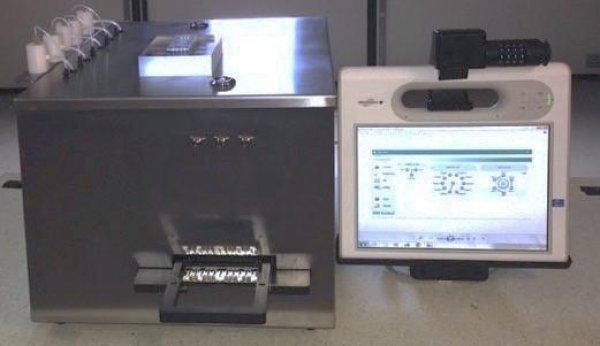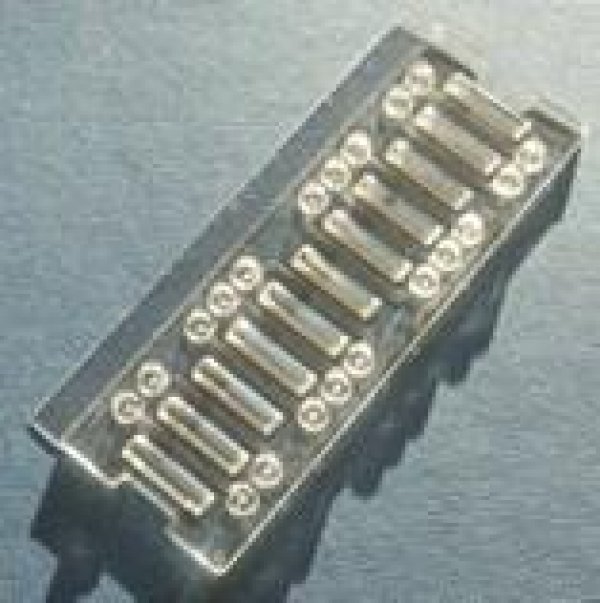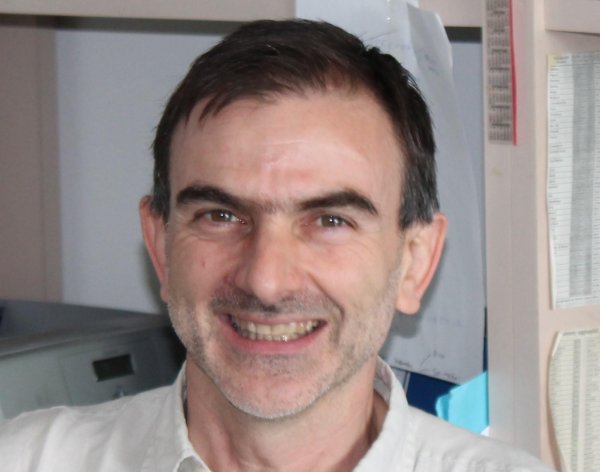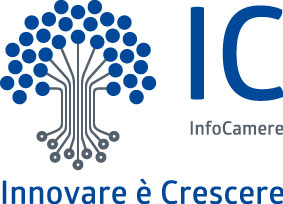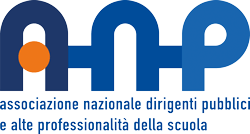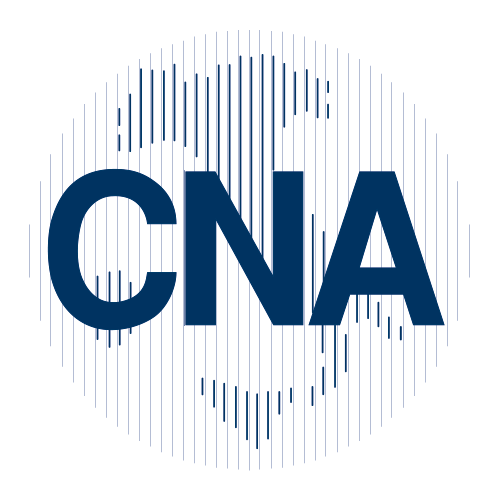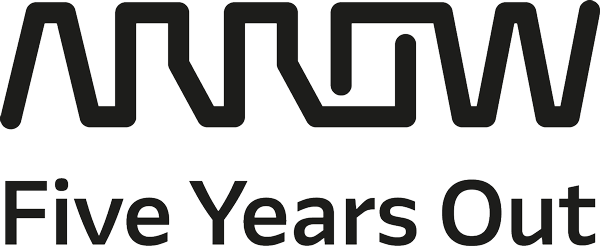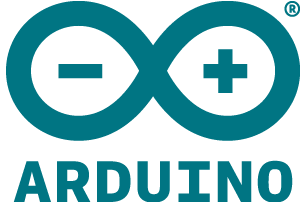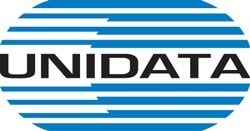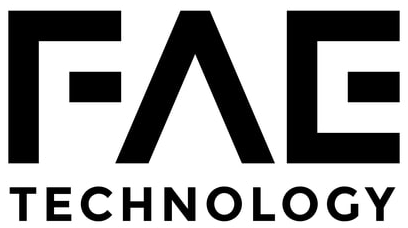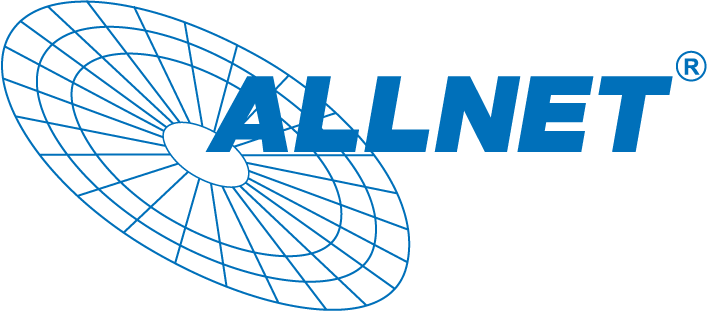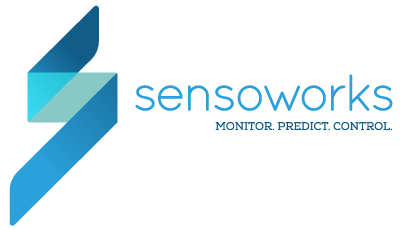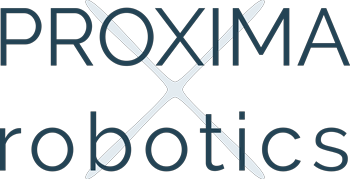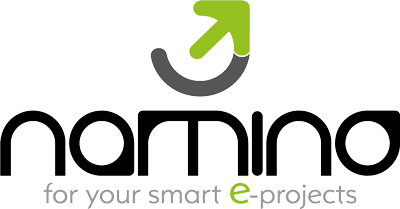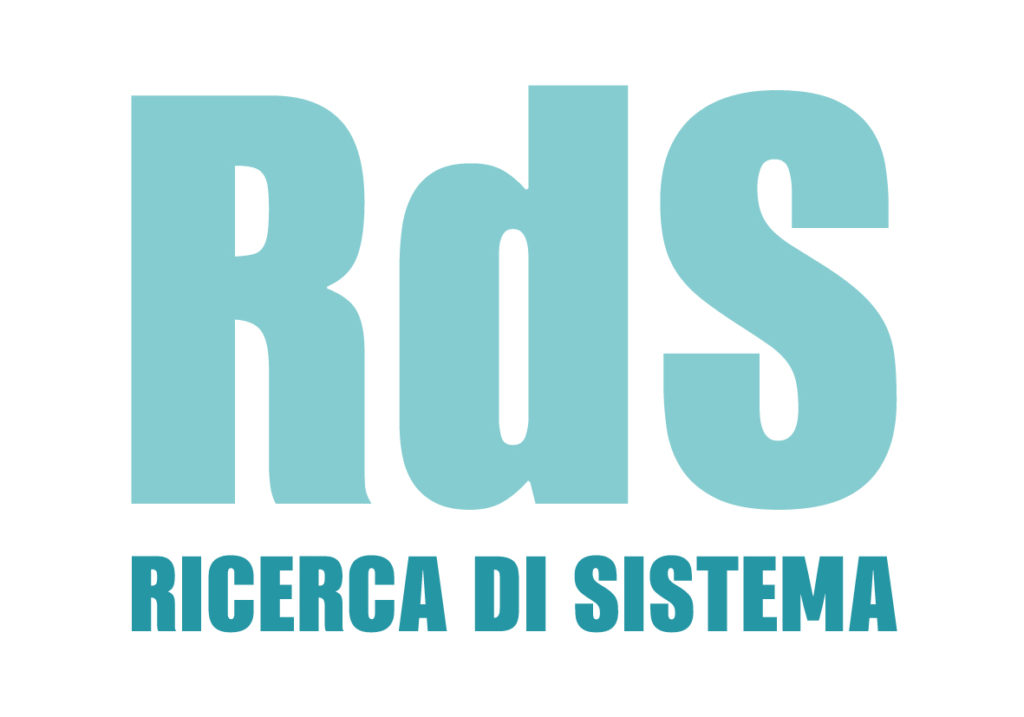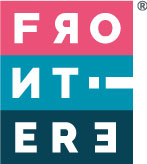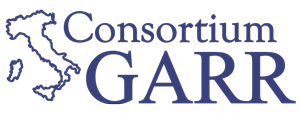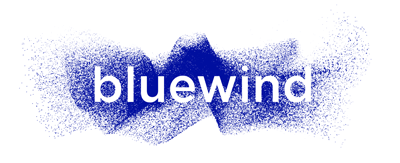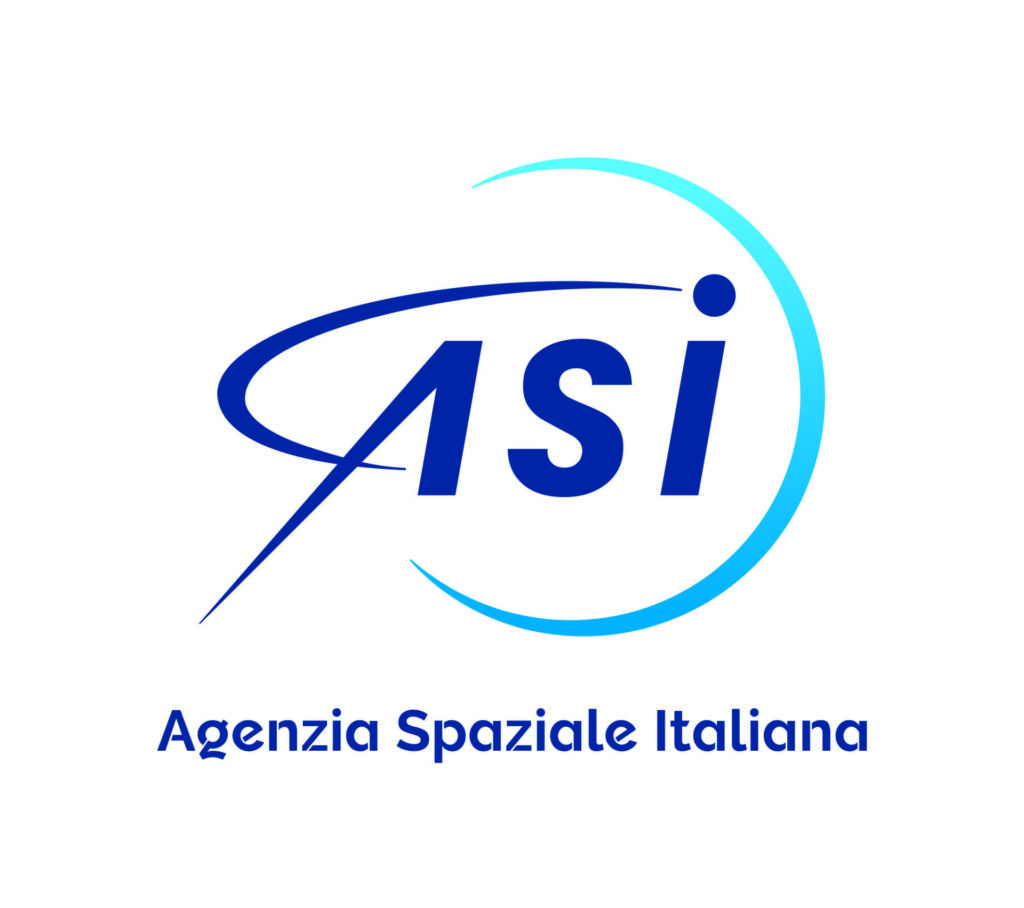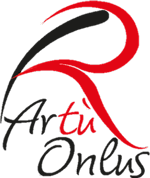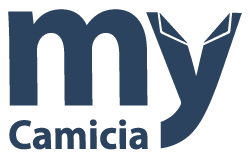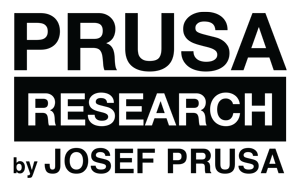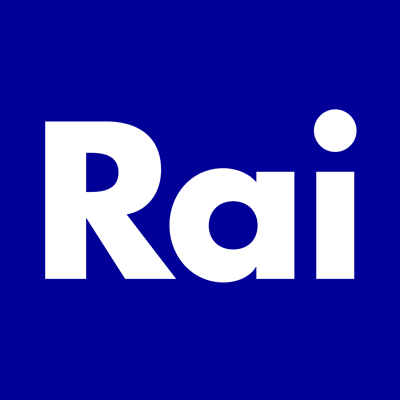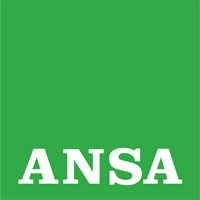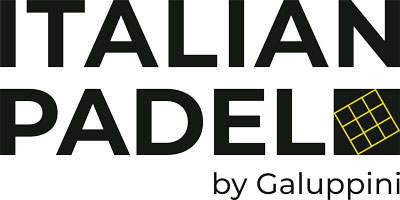Exhibitors 2019
- 3D PRINTING
- ART
- EDUCATION
- HOME AUTOMATION
- INTERNET OF THINGS
- KIDS & EDUCATION
- RECYCLING & UPCYCLING
- ROBOTICS
- SCIENCE
- YOUNG MAKERS (< 18)
- BIOLOGY
- GAMES
- ARTIFICIAL INTELLIGENCE
- OPEN SOURCE
- NEW MANUFACTURING
- FABRICATION
- WELLNESS & HEALTHCARE
- ENERGY & SUSTAINABILITY
- FOOD & AGRICULTURE
- 3D SCANNING
- CULTURAL HERITAGE
- AEROSPACE
- HACKS
- MUSIC & SOUND
- ARTISANS & NEW CRAFT
- FASHION & WEARABLES
- DRONES
- STEAM PUNK
- ARDUINO
- CROWDFUNDING
CNR4All Nanodem: una piattaforma ottica per il monitoraggio di più farmaci terapeutici in pazienti trapiantati
The heart of the device is a biochip that measures the concentration of immunosuppressants in a patients’ blood; the miniaturisation of the biochip and minimally-invasive sampling approach allow immunosuppressants to be monitored more accurately and at shorter time intervals than existing methods. Using an intravenous microdialysis catheter, a patient’s sample can be continuously drawn and mixed with the necessary reagents in microchannels, each devoted to the detection of a single immunosuppressant; in this way it is possible, using few microliters, to measure simultaneously multiple substances. Research trials are in progress at the Klinikum rechts der Isar hospital of the Technical University of Munich.
How do we make sure transplant patients are receiving the right medication levels? If levels of immunosuppressive drugs are too low, there is a danger of organ rejection, but too high and the patient may be unable to fight off infections. Currently, immunosuppressant drug levels are monitored by standard blood tests, but they don’t provide information quickly enough or give detailed information about the drugs activity in the patient, which varies. Our point-of-care testing device is a big step forward. It allows frequent monitoring close to the patient, without samples being sent to a central laboratory. The system developed is extremely efficient and can achieve very low detection limits for two important immunosuppressants drugs: cyclosporin A and mycophenolic acid.
How do we make sure transplant patients are receiving the right medication levels? If levels of immunosuppressive drugs are too low, there is a danger of organ rejection, but too high and the patient may be unable to fight off infections. Currently, immunosuppressant drug levels are monitored by standard blood tests, but they don’t provide information quickly enough or give detailed information about the drugs activity in the patient, which varies. Our point-of-care testing device is a big step forward. It allows frequent monitoring close to the patient, without samples being sent to a central laboratory. The system developed is extremely efficient and can achieve very low detection limits for two important immunosuppressants drugs: cyclosporin A and mycophenolic acid.
Italy
Francesco Baldini responsible of the Chemical & Biochemical Optical Sensor Group; Romeo Bernini (IREA)
The activity of the group, active since the beginning of the Nineties in the field of Optoelectronics and Photonics, has been mainly devoted to the design and development of optical sensors for the detection of chemical and biochemical parameters. In the last ten years, the group focused its attention on biophotonic diagnostics in the biomedical field for both invasive/minimally invasive applications and for Point Of Care Testing (POCT). Key strength is the high multidisciplinary aspect of the group which includes scientists coming from different disciplines (Physics, Engineer, Chemistry and Pharmaceutical Chemistry and Technology) which allows to face and solve all the different problematics encountered in biophotonic diagnostics.
Francesco Baldini, graduated in physics from the University of Florence magna cum laude in 1986, joined the Optical Fiber Group at IROE-CNR (now IFAC-CNR) in Florence in 1986. In the first years of activity, his research was devoted to the development of optical fibre sensors and to the application of optical methods to the restoration of paintings and frescoes. Since the beginning of the Nineties, he is active in the field of optical sensors and devices for chemical and biochemical parameters, mainly for biomedical application. He is author of more than 200 publications on the subject in International Journals, in scientific books and in International Conference Proceedings and delivered more than 30 invited presentation at International and National conferences. In 2009 he was nominated fellow of SPIE for his achievements in biological and chemical sensing in biomedicine. He has been President of the Italian Society of Optics and Photonics (SIOF) for the biennium 2015-2016. He is/was coordinator and/or responsible of many international and national projects in the field of optical chemical and biochemical sensors. He was guest editor of a special issue of Sensors & Actuators on the Europt(r)ode II Conference held in Florence in 1994 and of several issues in Analytical and Bioanalytical Chemistry. He is associated editor of Journal of Sensors and he was member of the International Advisory Board of the Journal Analytical & Bioanalytical Chemistry from 2005 to 2013. He is Chairman of the ASCOS (Advanced Study Course on Optical Chemical Sensors) Series (www.ascos.org) since 2010 and he was the chairperson of many international Conferences. He is a member of the Steering Committee of the Europt(r)ode Conference on Optical Chemical Sensors and Biosensors and is/has been member of the Scientific Committee of many International and National Conferences.
Francesco Baldini, graduated in physics from the University of Florence magna cum laude in 1986, joined the Optical Fiber Group at IROE-CNR (now IFAC-CNR) in Florence in 1986. In the first years of activity, his research was devoted to the development of optical fibre sensors and to the application of optical methods to the restoration of paintings and frescoes. Since the beginning of the Nineties, he is active in the field of optical sensors and devices for chemical and biochemical parameters, mainly for biomedical application. He is author of more than 200 publications on the subject in International Journals, in scientific books and in International Conference Proceedings and delivered more than 30 invited presentation at International and National conferences. In 2009 he was nominated fellow of SPIE for his achievements in biological and chemical sensing in biomedicine. He has been President of the Italian Society of Optics and Photonics (SIOF) for the biennium 2015-2016. He is/was coordinator and/or responsible of many international and national projects in the field of optical chemical and biochemical sensors. He was guest editor of a special issue of Sensors & Actuators on the Europt(r)ode II Conference held in Florence in 1994 and of several issues in Analytical and Bioanalytical Chemistry. He is associated editor of Journal of Sensors and he was member of the International Advisory Board of the Journal Analytical & Bioanalytical Chemistry from 2005 to 2013. He is Chairman of the ASCOS (Advanced Study Course on Optical Chemical Sensors) Series (www.ascos.org) since 2010 and he was the chairperson of many international Conferences. He is a member of the Steering Committee of the Europt(r)ode Conference on Optical Chemical Sensors and Biosensors and is/has been member of the Scientific Committee of many International and National Conferences.
B1 (pav. 7)


